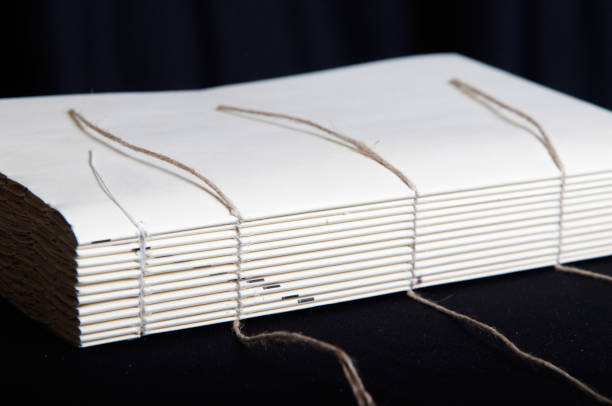
The process of book binding; sewing on cords. Black background

Before there was Tokyo, there was Kyoto— and even further than Kyoto, there was Nara. The history behind the Japanese printing press is long, intricate and war-torn. A combination of Chinese and Korean influences gave Japan the literary world it has today.
In the 8th century, Nara, the ancient capital of Japan, was home to Buddhist monks and court officials who guarded manuscripts and printed texts. It was essential for these esteemed class members to be familiar with the classics, so they could preserve the Japanese way of life.
During the Heian Period (794-1185), Japanese literature reached its apex and produced famous works such as Murasaki Shibiku’s “The Tale of Genji,” considered by many to be the world’s first novel.
Everything about sharing stories was turned into a form of art. No detail was left behind: the paper, the handwriting, the various printing processes— all the components have strong ties to Japanese culture. (Fun fact: in the court, it was not unusual for courtiers to carry decorative paper up their sleeves for jotting down moments of poetic inspiration!)
The medieval era brought printing to Kyoto, namely in the Five Mountains cluster of Zen monasteries, derived from Chinese and Korean inventions such as moveable type. Unfortunately, shortly after the moveable type’s introduction, Japan entered the “Warring States Period” (1467-1615). During this time, Japan began to push out all foreign influences as a way to preserve their practices.
The famous Edo Period (1603-1876) is especially known for cutting off Western cultures, so Japan fell behind in the mass-production book market. However, some Japanese took advantage of the moveable type that Koreans introduced in the “Warring States Period” and started their own private practices. From there, the book market grew and developed into what it is today!
Flash forward to the present day Kyoto, there are a handful of Japanese who take great pride in the art of bookbinding. They are known as “Book Masters.” Basically, they’ve made bookbinding their hobby!
One way they share their passion is by leading workshops for locals and foreigners. In a workshop, patrons hand-pick, stitch and glue their own books. Depending on where the appointment is reserved, one can expect to craft a sketchbook or journal. One fascinating piece in the bookbinding process in the book cover fabric. Each cut of fabric is taken from old kimonos, passed down generations. They are loaded with cultural and historical significance, so, not only are you taught to craft a book, you are taking home a piece of ancient history!
One your next journey to Kyoto, don’t forget to make a reservation! It’s an honor to experience— worthy of your effort and time. Through Airbnb, you can book an appointment hosted by Yoko in Kyoto.







